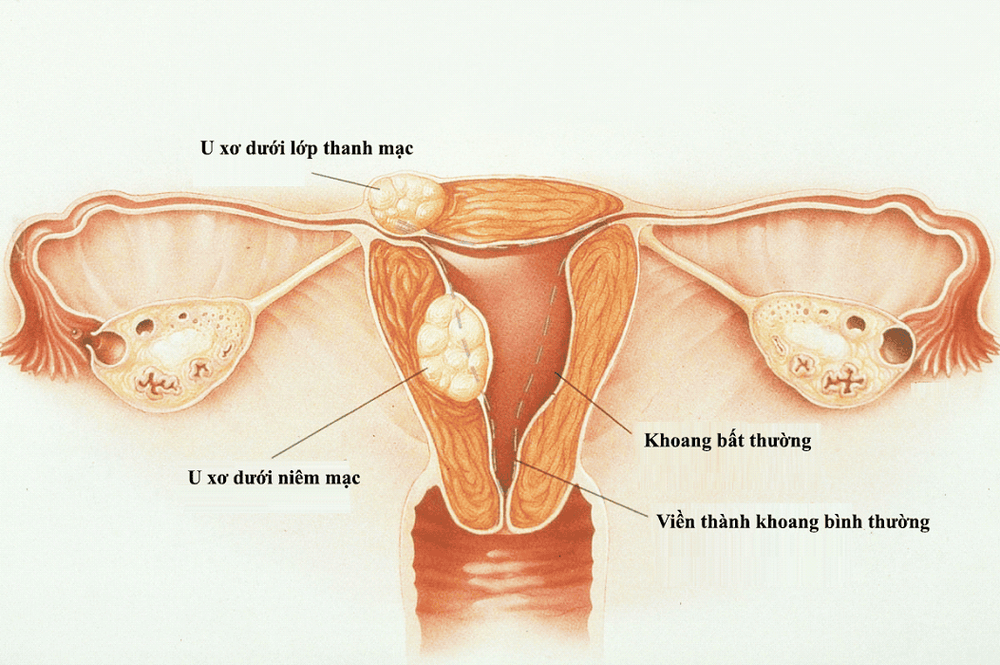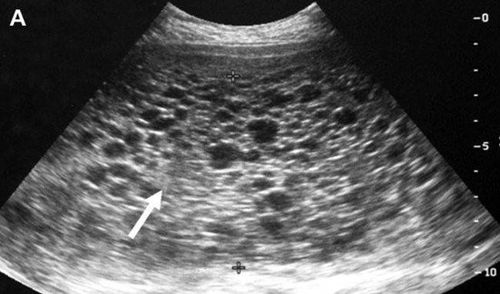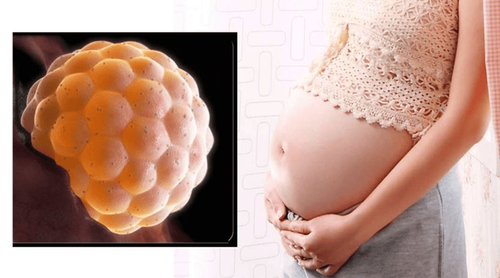This is an automatically translated article.
The article was consulted with Specialist Doctor II - Nguyen Thi Minh Tuyet - Head of Obstetrics and Gynecology Department - Vinmec Central Park International General Hospital.Ovarian pregnancy is one of the common causes of miscarriage, if not diagnosed and treated promptly, it can progress to a malignant ovum and cause serious consequences for the mother. So what are the malignant eggs, and what are the characteristics?
1. What is a malignant egg pregnancy?
Most ovum pregnancies are benign, when the egg is located in the uterus. Malignant pregnancy, also known as trophoblastic cancer, is when the ovum tissue invades the uterine muscle, causing serious consequences such as uterine perforation, bleeding, and invasion of the surrounding organs. arches in the pelvis and abdomen, or distant metastases (such as to the vagina, lungs, brain, etc.) to form malignant tumors.2. Causes and favorable factors of pregnancy
The exact cause of ectopic pregnancy has not been fully elucidated until now, but there is a lot of evidence that it is due to an abnormality in the fertilization process, which leads to the abnormalities of the chromosome set.Normal fertilization takes place between a normal ovum and a normal sperm to form a normal fetus
Abnormal fertilization of the ovum and sperm exhibits the following morphology:
1 Abnormal ovum normal (ovule with no nucleus or inactive nucleus) fertilized with 1 or 2 sperm at the same time is called a complete ovum 1 normal ovum that fertilizes 2 sperm at the same time or 1 sperm that duplicates itself is called ovum partial eggs. Favorable factors of pregnancy
Women over 40 years old or under 20 years old Pregnant many times Pregnant women have abnormalities in the uterus such as tumors, uterine cancer, uterine scars.. Pregnant women have a good standard of living. low, inadequate nutrition such as iron deficiency, folic acid, vitamin A.. Factors that increase the risk of normal pregnancy into malignancy such as:
Too high concentration of β-hCG) Tumor large in the uterus

3. Manifestations of malignancy
3.1 Manifestations of being pregnant
Menstruation, morning sickness and high HCG beta test.
3.2 Abnormal pregnancy symptoms
The uterus is disproportionate to the gestational age, there are cases where the egg is only 2-3 months old, but the uterus is already as big as a normal pregnant person for 5-6 months. No visible pregnancy Vaginal bleeding: Usually occurs from the 6th to the 16th week of pregnancy, black or red blood, persistent, a little, can stop on its own for a short time. Due to blood loss, pregnant women are tired, pale, mucous membranes are pale, or dizzy Examination: can't hear the fetal heartbeat, can't feel the fetus Ultrasound: No embryo, picture of holes like a nest or just I saw 1 portion of normal spinach. Beta hcG increased very high above 100,000 m UI/ml

3.3 Other manifestations
Manifestations of preeclampsia: Edema, gestational hypertension, proteinuria. Manifestations of hyperthyroidism: enlarged thyroid gland, increased thyroid hormone Manifestations of invasion and metastasis such as: Uterine mass, uterine perforation, vaginal metastases, creating metastatic nodules in the vagina, usually purple nodules , in the anterior vaginal wall, brain and lung metastases cause symptoms in these organs. Diagnosis of ovum and malignancy is mainly based on clinical symptoms, ultrasound findings and Beta HcG test.
4. Complications of malignancy
Complications of malignancy are common such as: Miscarriage, heavy bleeding causing anemia even hemorrhagic shock, uterine perforation, uterine rupture due to the ovum infiltrating the uterine muscle layer, invasion and metastases to organs around the pelvis such as vagina, ureters, causing thickening, infection, abscess. in that organ such as coughing blood, shortness of breath, embolism, seizures...
5. How to treat malignancy?
Principles of treatment of malignant ovum: Take the maximum amount of pregnancy out of the body, combine with chemical treatment to destroy malignant ovum tissue
Specific method: Remove the ovum from the body by curettage. or hysterectomy to remove the egg tissue mass in cases where there is still a need for childbirth, performed by experienced specialists, it may be necessary to cure many times to ensure all the eggs are removed. . Hysterectomy is indicated in the following cases: The patient is old (≥ 40 years old) and has enough children; or have complications such as extensive invasion of the uterus causing heavy bleeding; or ineffective chemotherapy. Chemotherapy The first drug is usually: Methotrexate combined with Folinic Acid. Other chemicals can be used if the first course of therapy fails such as: EMA-CO, EMA-EP,.... can use monotherapy or multi-chemotherapy depending on the patient's medical condition. . Follow-up treatment Treatment of malignancy treated as cancer, the patient needs to be closely and periodically monitored. The patient will be discharged from the hospital when the beta hCG blood test returns to normal. then patients are required to periodically monitor beta hCG at least 2 years later to detect early cases of recurrence or distant metastases. The disease can be completely cured if it is diagnosed and treated in time and according to the right regimen.
6. How to prevent malignancy?
Maternity measures that can be applied to prevent malignancy
Not getting pregnant when too young or too old, not pregnant many times, not having multiple abortions, good treatment of gynecological diseases, Uterine tumor before pregnancy, adequate nutrition during pregnancy, healthy lifestyle (no tobacco, stimulants, avoid radiation exposure...) Examination, close follow-up during pregnancy pregnancy, early detection of abnormal manifestations early for timely treatment.

Please dial HOTLINE for more information or register for an appointment HERE. Download MyVinmec app to make appointments faster and to manage your bookings easily.














